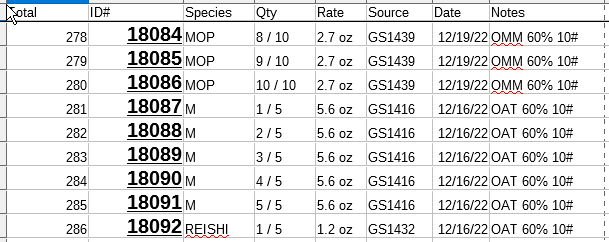So we are trying to make some sort of label generator to keep track of our mushroom bags (we are a mushroom farm and grow mushrooms in bags.
Currently we have a calc sheet that updates a database table that writer uses to make the labels
but we need a faster way of populating the calc sheet!
Each label needs to have 7 pieces of data

Some of the data are consecutive numbers, some are fixed info
Is it possible to make some sort of form or code where we can enter the species , the quantity, its other attributes and it will generate a list of all the cells we need.
For example we want to enter:
Species = Shiitake, Date=1/1/23, Source= GS1234, Rate=1.2oz, Quantity= 50, Starting ID=25.
Species = Lions Mane, Date=1/1/23, Source= GS1236, Rate=1.5oz, Quantity= 20, .
and it will produce 70 cells with the above info and IDs ranging from 25-94.
If anyone could let me know whatever tools i need to learn to make this happen, i would greatly appreciate it.

